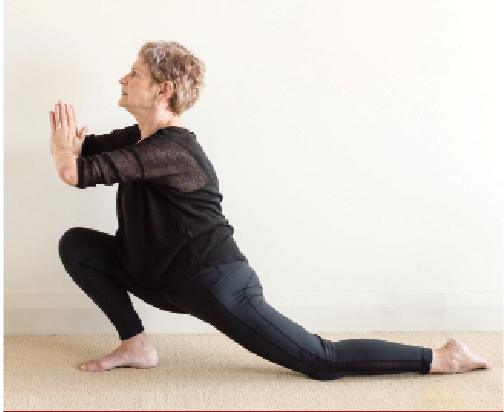Q: “I often hear that I need to bring my thighs back to make sure my legs are underneath me. I am having a very hard time with this. When I try to force them back, I get so tense in my hips that I feel I can’t sit smoothly. Also, I feel that I then sit more on my thighs than on my seat. Is there an exercise that can help me find the right position for my legs?” —Name withheld by request
A: It can be challenging to find the correct leg position, where your legs are relaxed and effective while allowing you to maintain your pelvis in a neutral position. Not surprisingly, the suppleness and movement of your pelvis and hips has a great influence on how your upper and lower legs will work. You will need to work consistently on stretching the muscles, ligaments and tendons in these areas. I’m going to give you a few exercises, both on and off the horse, that should help you.

As an Amazon Associate, Dressage Today may earn an affiliate commission when you buy through links on our site. Products links are selected by Dressage Today editors.
There are a variety of unmounted exercises you can do at home. Gentle yoga poses and stretches will aid you to both develop strength and flexibility in your hip flexors, abductors and adductors. Hold all poses for five to eight deep, slow breaths. Work to make your exhalations longer than your inhalations. For example: three seconds for the inhalation and five to eight seconds for the exhalation.

Happy Baby Pose. This pose is useful for opening the entire pelvic region and hips and to stretch the adductors. It will help you deepen your seat and increase the mobility of your hips in the saddle. Lie on your back on the floor. Grab the outside of the soles of your feet, open your legs wider than your torso, and bring your knees up around your armpits. If you have trouble with this, use a belt or lead rope around each foot at first. Gently push your feet into your hands to create a bit of resistance.
Shallow Lunge. This pose stretches your quads and hamstrings. Lunge with one leg forward and your knee bent. Extend the back leg, keeping your toe on the ground, pointing forward. Only lunge as far as you are comfortable. Keep the knee of your front leg parallel over your foot, not in front of it. Keep your hips facing forward. As you become more flexible, you can lunge further and rest your hands on either side of your body on yoga blocks, thick towels or a block of wood. Eventually, you’ll be able to do this with your hands on the ground. Now try to stretch your heel toward the back wall. You could add gentle rocking to deepen the stretch.
There are also many mounted exercises you can try. Here is a quick review of what you want to achieve: Your legs should hang down from relaxed hip joints. Your thighs should be slightly turned in, but only as much as you can do without the hips or pelvis becoming locked.
You will be able to feel this best without stirrups. Take your hand and reach around to the back and underneath your thigh. With your hand rotate your thighs so they are as flat as possible against the saddle. Keep your pelvis in a neutral position and maintain the vertical alignment with your upper body.
No stirrups. Practice the above exercise without stirrups at the halt and walk. When you are comfortable, add a few minutes of sitting trot. Make frequent transitions back to walk to re-align yourself. When you pick up your stirrups again, practice riding with no pressure on the stirrups from your foot.
Leg lifts. This helps you engage your abductors and adductors and can be incredibly difficult. At the halt, either with or without stirrups, lift your upper legs just 2 inches off the saddle, still keeping your thighs rotated inward and everything else in alignment as discussed above. Hold for three breaths, working up to five or eight breaths. Slowly allow your legs to drape softly back to the saddle. Start at the halt and work up to walk and a little trot. If you can’t actually lift your thighs off the saddle, practice engaging them until you’ve isolated the muscles and can work up to the lifts.
Snake slithering. This exercise mobilizes the hips and increases the mobility of your pelvis. Drop your stirrups and move your hips really far off one side of your horse so it feels like you would slide right off, but keep your legs slithered around the horse like a snake. Hold for three breaths, then slither back to the middle of the saddle for three breaths. Now slither off to the other side and once again back to the middle. Which side was harder for you? After doing this exercise several times, you should feel more mobile in your pelvis and be able to find the middle of the horse better. Start at the halt, work up to walk and trot.
Always make sure to warm up before attempting any exercises. Stop immediately if you feel any pain. It may be helpful to consult a physical therapist, yoga therapist or instructor who works with rider biomechanics to make sure you are on the right track.
Click here to read more articles with Kathy Rowse.

Kathy Rowse is a USEF “S” dressage judge and has earned her USDF bronze, silver and gold medals. She is also a member of the USDF “L” faculty and a member of the USEF Youth Committee. Based in Suffolk, Virginia, she and her husband, Mike, operate Silverleaf Farm, a small training facility.











